20 Workouts to Help Seniors Stay Active and Healthy
Movement is medicine—especially as we age. For seniors, staying active isn’t just about fitness—it’s about preserving independence, preventing injury, and living each day with energy and ease. Regular exercise has been shown to ease the symptoms of arthritis, improve heart and lung health, regulate blood sugar, and boost both mood and memory. The best part? You don’t need a gym or fancy equipment to reap the rewards. We’ve expanded our list to 20 Workouts to Help Seniors Stay Active and Healthy, featuring simple, low-impact exercises that can be done from the comfort of home or in the fresh air of your backyard. Whether you're looking to improve balance, strengthen muscles, or just keep your body moving, these routines are tailored for all ability levels—gentle enough to feel safe, yet effective enough to make a difference. Let's get started!
1. A Five To Ten Minute Warm-Up

Warming up is the most important part of beginning a workout. Warm up consists of light cardiovascular exercises as well as stretching that increases blood circulation and body temperature, but also protects against injury. At the beginning of your workout, start by walking or lightly jogging in place for five to ten minutes with your arms swinging freely to help remain balanced. If you have limited mobility or if you would rather, you may sit in a chair and begin with chair exercises such as head, arm and shoulder rolls followed by ankle circles and leg extensions. Now that you know how to begin your workout routine, continue reading to learn about how to perform chair squats.
2. Chair Squats Are A Great Leg Exercise
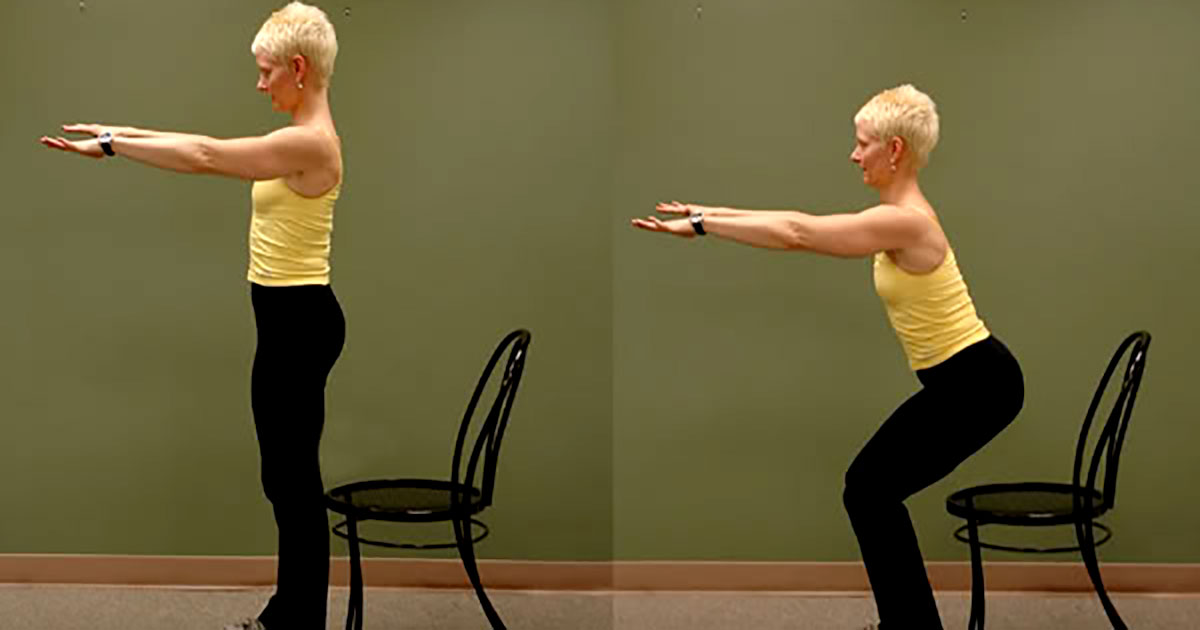
Practicing squats with good form can help build strength and muscle in the thighs, hips, and glutes. To begin, stand in front of a chair with your feet shoulder-width apart. Bend your knees, putting weight on your heels, then stick your hips back and arms straight out to gain better balance. Sit down until you make contact with the chair. As soon as you feel the chair, slowly stand back up. Try to do so without rocking or swaying. Repeat for twelve to fifteen repetitions. To modify the workout to make it easier you can place your hands on your thighs, or if you need the exercise to be a little bit more difficult, do it while holding weights or a medicine ball in your hands.
3. Do Some Light Wall Push Ups
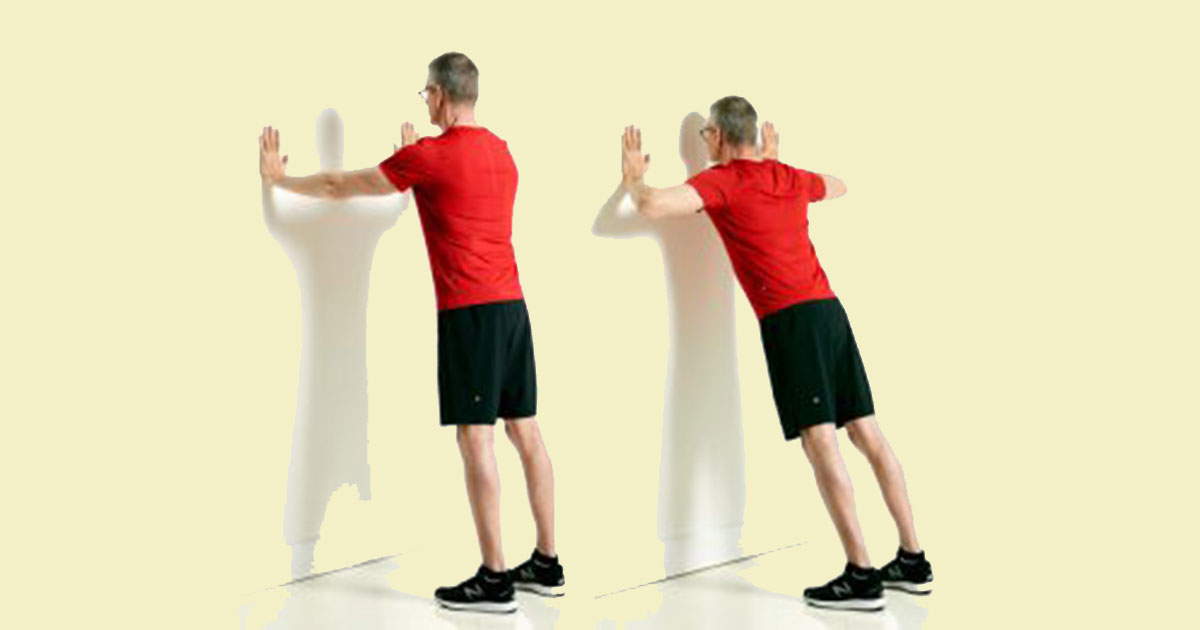
Push-ups work the muscles within your chest, shoulders, and arms, specifically your deltoids, triceps, and pectorals. Doing push-ups against a wall will lower the weight and resistance of gravity, but it will allow for an easier push up with better form. Begin your wall push-ups by standing a few feet from the wall with your feet shoulder-width apart. Place your hands on the wall at chest level, slightly wider than your shoulders. With your back straight, pull your abs in, bend your elbows and lower body to the wall. When your elbows are at a ninety-degree angle, push back to the starting position. Repeat for twelve to fifteen repetitions. As you get more comfortable doing wall push ups, go further from the wall for a higher difficulty. When you are fully satisfied doing fifteen or more wall push-ups, try doing ten to twelve reps on the floor for more resistance and a more intense workout.
4. Do Step Ups To Build Leg Muscle
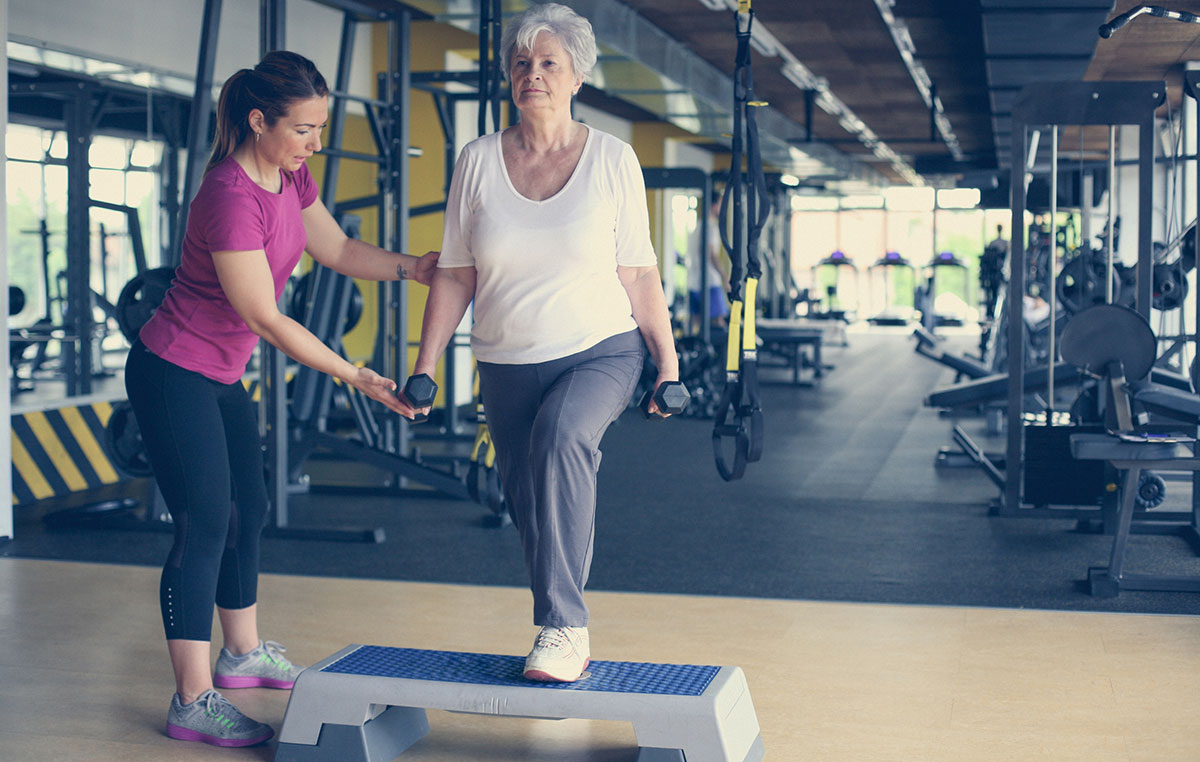
Performing step ups will strengthen the muscles that support the knee. However, if you have issues with your knee, skip this exercise as it can aggravate your knees too much. Begin your step-ups at a staircase with a railing for support if it is needed. Stand on the bottom step and step up with your right foot. Bring your left foot up onto the stair, and then bring it back down to the floor, keeping your right foot on the step for the entire time. Repeat this for twelve to fifteen reps and then switch feet, doing another twelve to fifteen reps with the other foot. Continue reading to find out how to build the strength in your arms.
5. Do Bicep Curls To Regain Strength
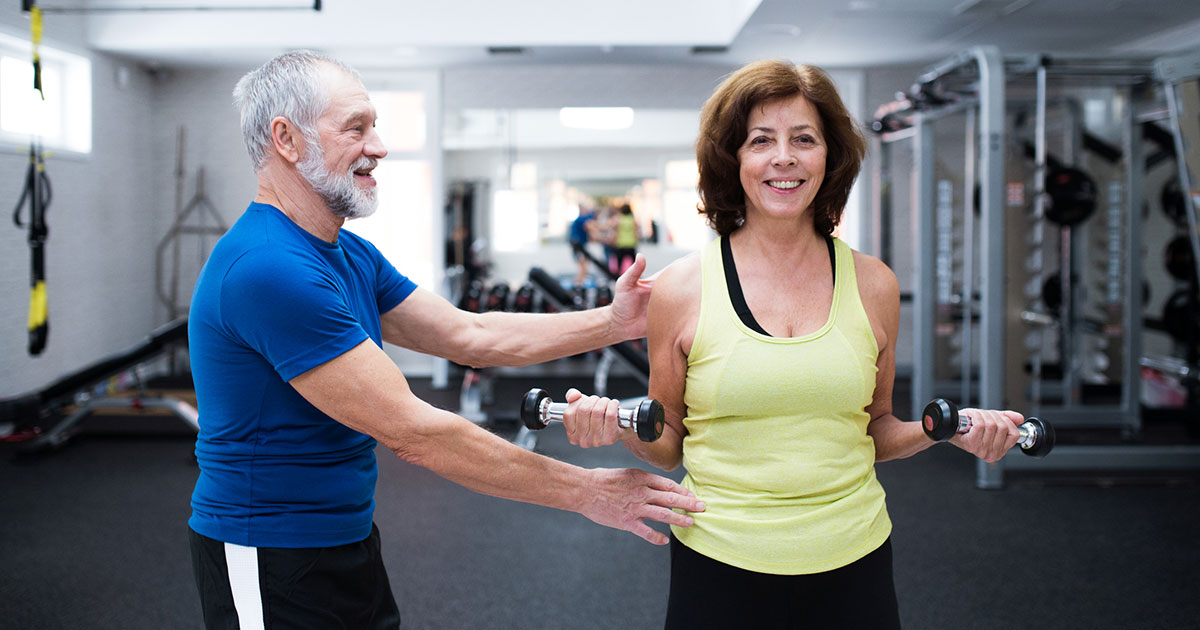
Bicep curls strengthen your biceps, which are muscles you use every day when carrying groceries, opening doors, and anything with a pulling motion. To begin bicep curls, you will want to stand with your feet spread hip-width apart, with a dumbbell in each hand. Suggested starting weights are five to eight pounds. If that does not seem hard enough, begin with eight to fifteen-pound dumbbells. Begin with your palms facing your thighs. Bring the right dumbbell up, turning your fist towards you while curling the weight towards your shoulder. Hold the weight near your shoulder for two seconds and then slowly lower the weight back down into the beginning stance. Now, curl the weight in your left hand. Repeat this for twelve to fifteen reps.
6. Knee Lifts With A Medicine Ball
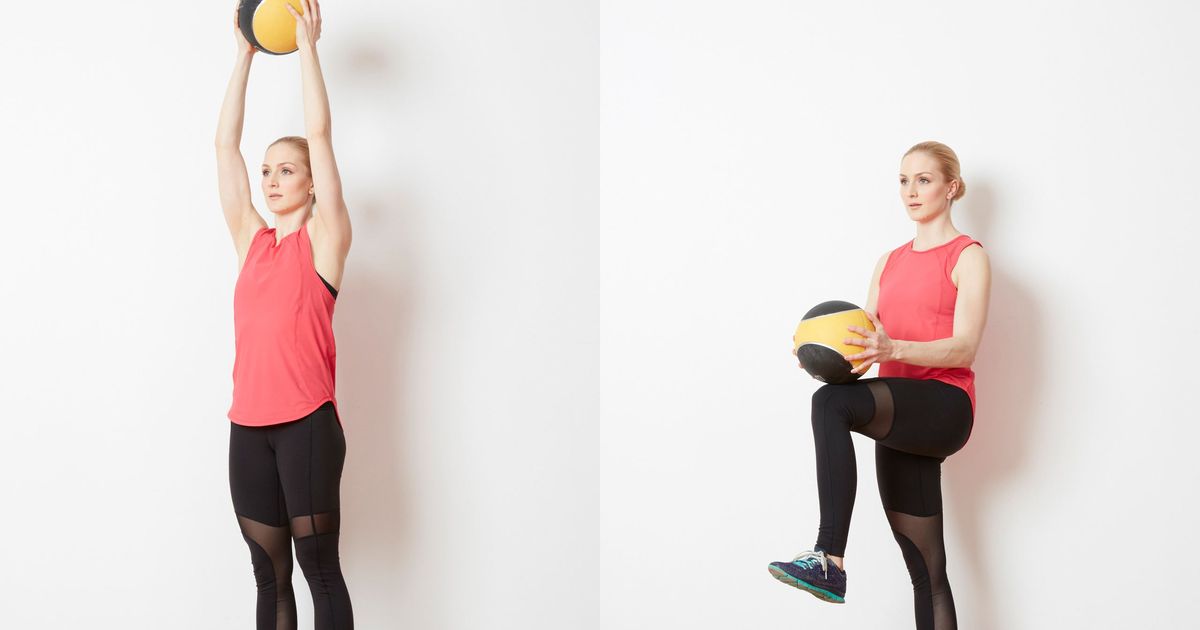
Knee lifts using either a light or heavy weight, such as a medicine ball or dumbbells, is a fantastic way for seniors to work on their upper body endurance as well as their balance and stability. Doing this move is quite simple. First, hold a light weight or medicine ball, about two to five pounds, in both hands right above your head. Then, lift your right knee up to your waist while slowly bringing down your arms and touching the weight or medicine ball to your knee. Lower your knee and return your arms in the starting position with the weight or ball above your head. Repeat these steps for the other knee, alternating sides and continue doing this exercise for thirty to sixty seconds. If you want to ramp up the intensity, you can speed up your movement while still maintaining control of the weight and your body, while remaining balanced, and lifting your knees as high as possible. To make this exercise easier, you can simply use no weight at all or just hold an appropriate weight at chest level as you lift your knees. If you have knee or back problems, you can avoid the upper body movement of this exercise and just do knee lifts.
7. Ball Taps

Another great exercise that works the core muscles and builds balance and stability, ball taps can be done while sitting. The first move is to sit in a chair and place a ball in front of your feet. The ball can be small, or it can even be a phone book or another object, as long as it is something you can touch with your foot. Make sure to sit up straight and try your best not to rest against the back of the chair, keeping your back straight and your abs contracted. Then start with your hands behind your head and lift your foot and tap the top of the ball or object. Slowly bring your foot back down to the floor, then switch sides and repeat the same motion with your opposite foot. Alter each foot for all repetitions, and repeat this exercise for thirty to sixty seconds.
8. Seated Rotations
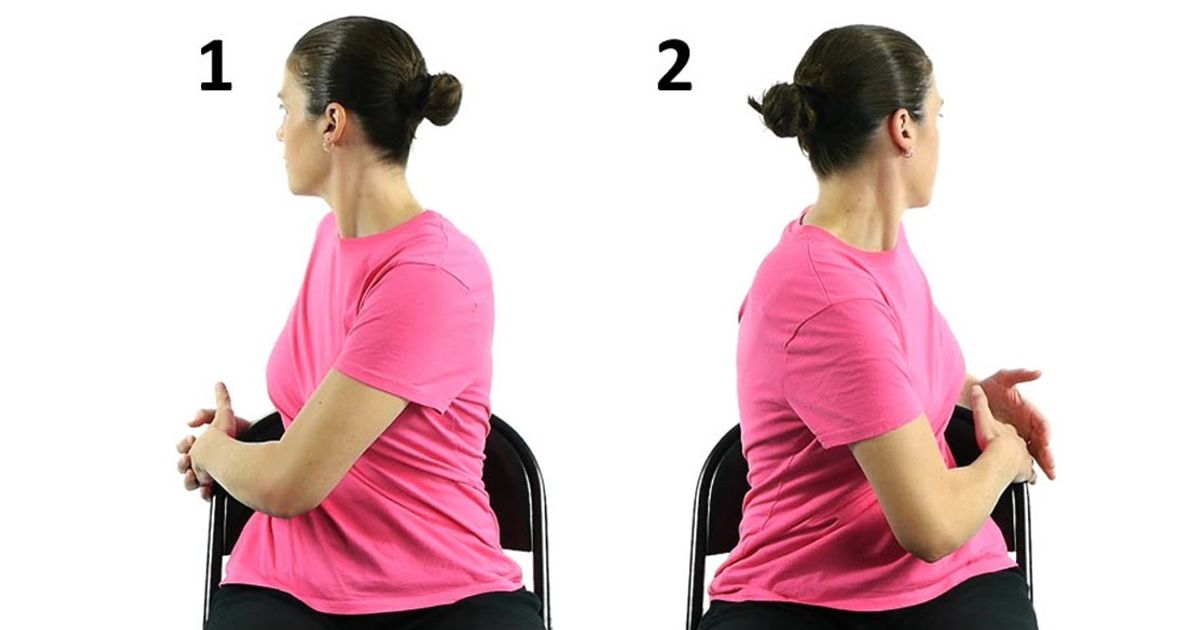
Seated rotations are another wonderful exercise that works all the muscles of the torso, including the abs and back. To do this easy exercise, begin by sitting on a chair and hold a medicine ball or weight. The suggested weight for women to use is between five and eight pounds, and eight to fifteen pounds for men, however, you can use whatever weight is comfortable for you. Next, hold the weight at your chest with your shoulders relaxed and elbows out to the sides. Keeping your hips and knees facing forward, rotate the torso to one side as far as you comfortably can, and focus on squeezing the muscles around your waist. Rotate back to center, then repeat the motion on the exercise, keeping your movement slow and controlled. Continue doing this exercise while alternating sides for twelve reps or to how many repetitions you can handle. Remember, one rep is to the right and left.
9. Go For A Stroll In The Park
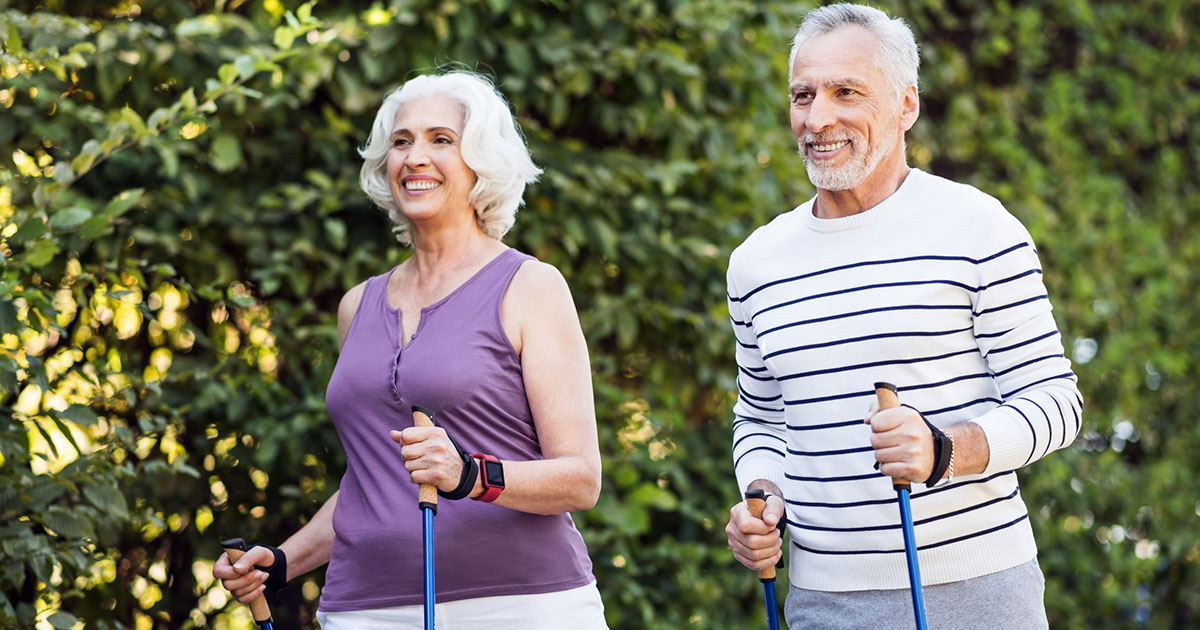
Walking is one of the best exercises for seniors, as there is little planning or equipment needed to do it. To begin your walking routine, you may want to find or invest in a good pair of shoes. Try doing some light stretching before and after your walk to help loosen your muscles and avoid injury. When you begin a walking routine, focus on maintaining proper posture; your back should be straight, and your shoulders rolled back. Start with a short distance, possibly ten to fifteen minutes and increase your walks by a few minutes each day until you’re walking for thirty to forty-five minutes. By walking every few days, you will begin to notice many benefits such as increased mobility, improved balance and strength, improved flow of oxygen and blood, and you may even notice you lose a few pounds.
10. Go Swimming For A Full-Body Workout
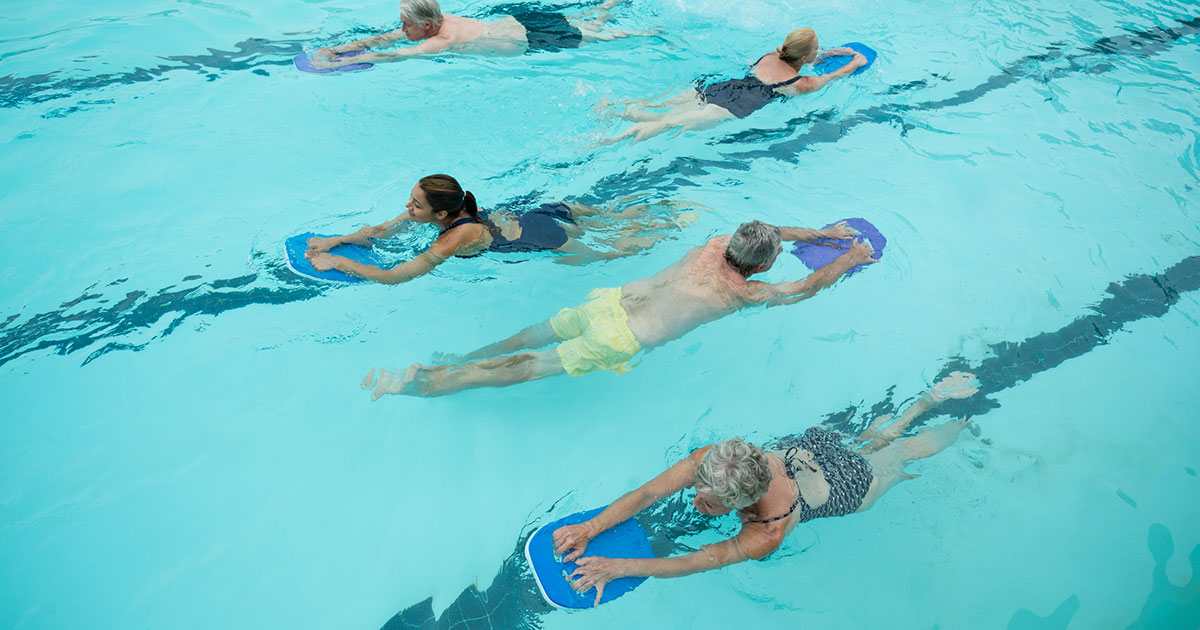
Swimming and water aerobics are amazing exercises to get a full body workout. It helps improve endurance, flexibility, coordination, balance, strength, posture, cardiovascular fitness, and it helps alleviate stress. When you begin swimming, practice doing laps around the pool of whichever stroke feels most natural or the easiest for you. When you get tired, switch up strokes to work other groups of muscles.
11. Standing Calf Raises
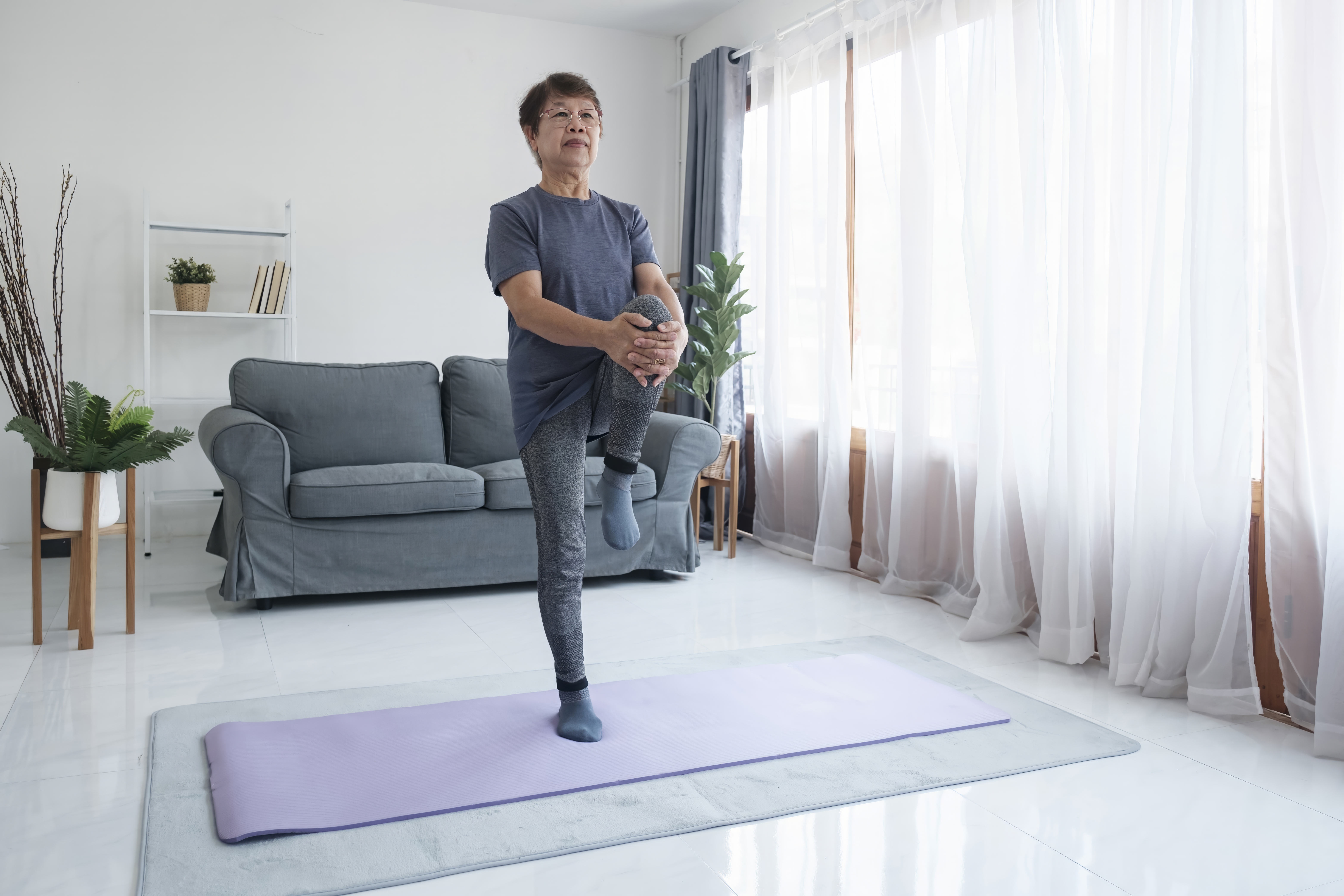
Calf raises are a simple yet powerful way to improve ankle strength and balance. Stand behind a sturdy chair and hold the back for support. Slowly lift your heels off the ground, rising onto your toes. Hold the position for a second, then lower your heels back down. Do this 10–15 times. As you get stronger, try it without holding the chair. Strong calves help with stability while walking and reduce the risk of falls.
12. Shoulder Rolls to Ease Tension
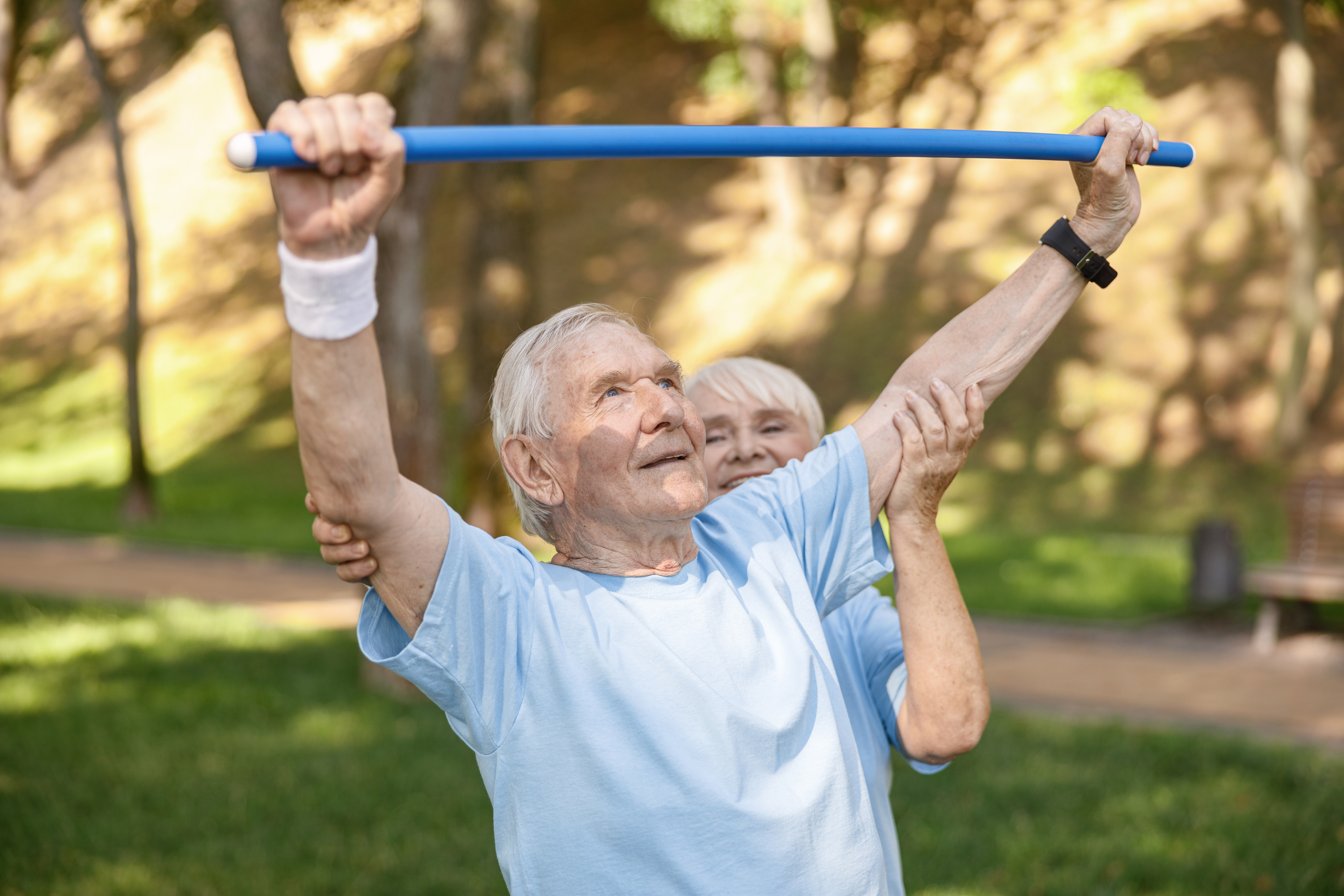
Shoulder rolls are a great warm-up and stress reliever. Sit or stand tall with your arms relaxed at your sides. Slowly roll your shoulders up toward your ears, then back and down in a circular motion. Do this 10 times forward, then 10 times in reverse. This exercise loosens tight shoulder muscles and helps improve posture, which is especially important for those who spend a lot of time sitting.
13. Heel-to-Toe Walk for Coordination
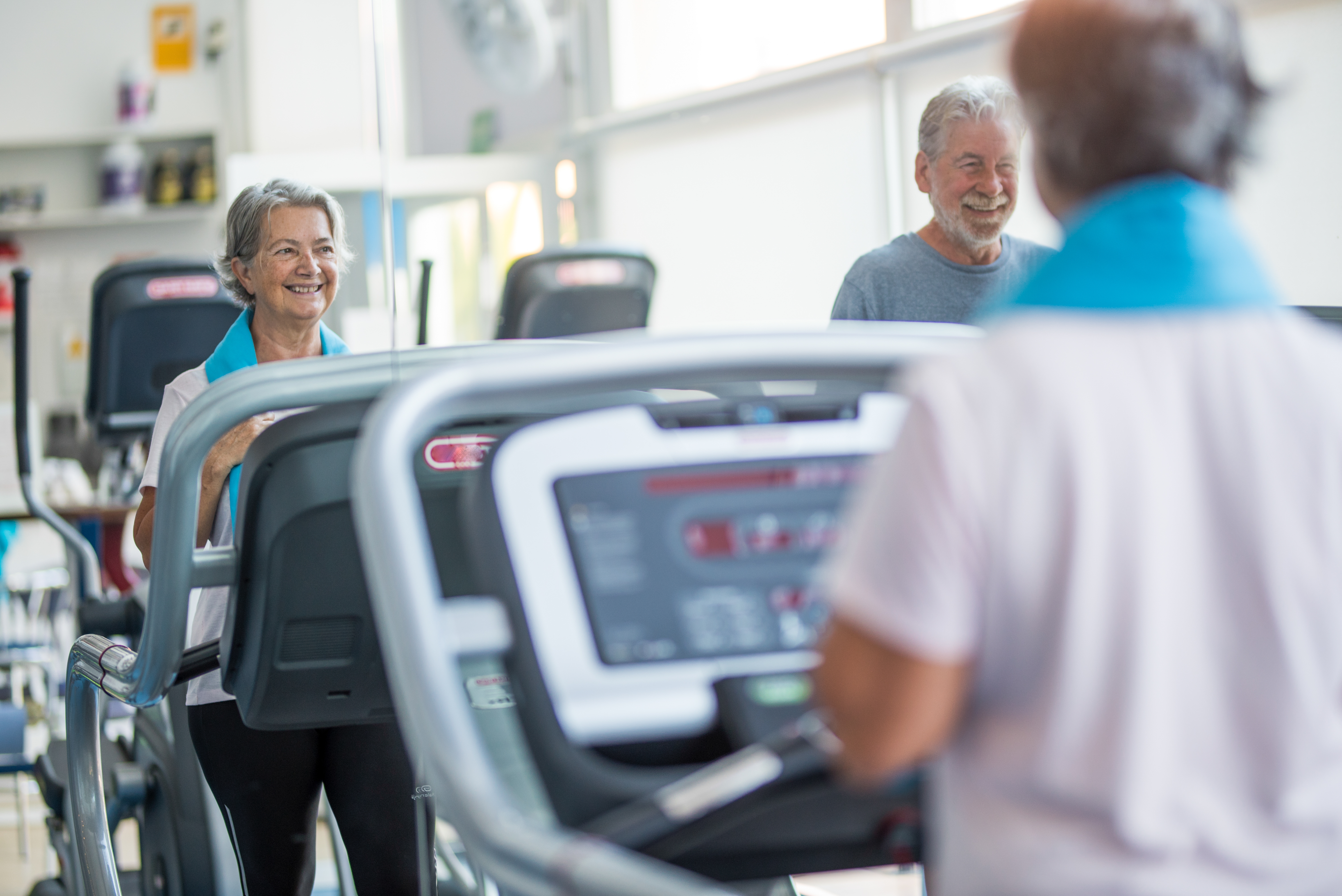
This simple exercise mimics walking on a tightrope to improve balance and coordination. Stand upright and place your right foot directly in front of your left foot, so the heel touches the toes. Walk in a straight line for 10 to 15 steps. If needed, use a wall for support. This movement strengthens your core and leg muscles while improving your gait, which can help prevent trips and falls.
14. Seated Marching for Low-Impact Cardio
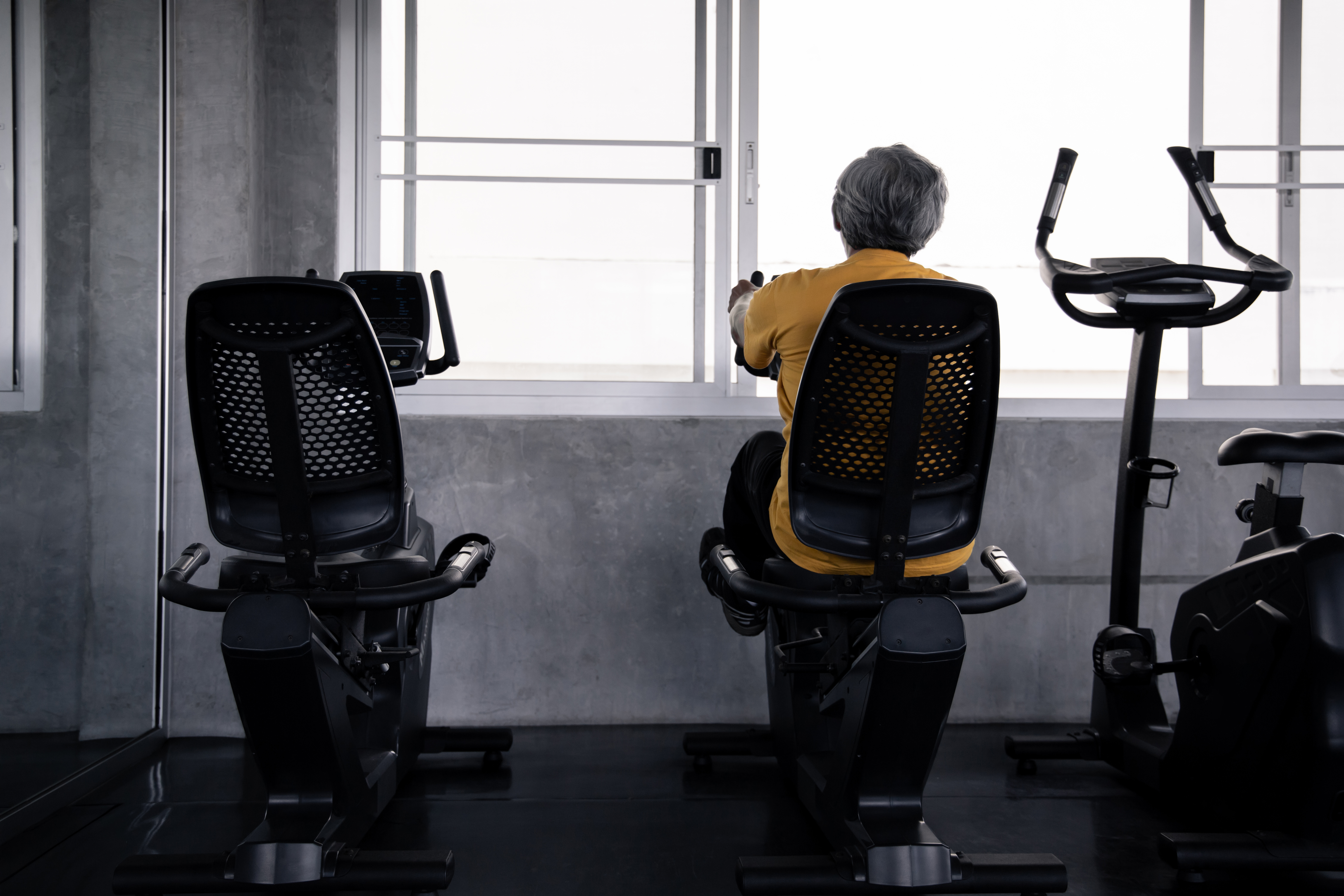
Perfect for those with limited mobility, seated marching helps increase heart rate and circulation. Sit upright in a sturdy chair with your feet flat on the ground. Lift your right knee as high as you can, then lower it. Repeat with the left leg. Continue alternating knees for 30 to 60 seconds. Pump your arms to increase intensity. This simple move supports cardiovascular health and improves hip mobility.
15. Arm Circles for Shoulder Mobility
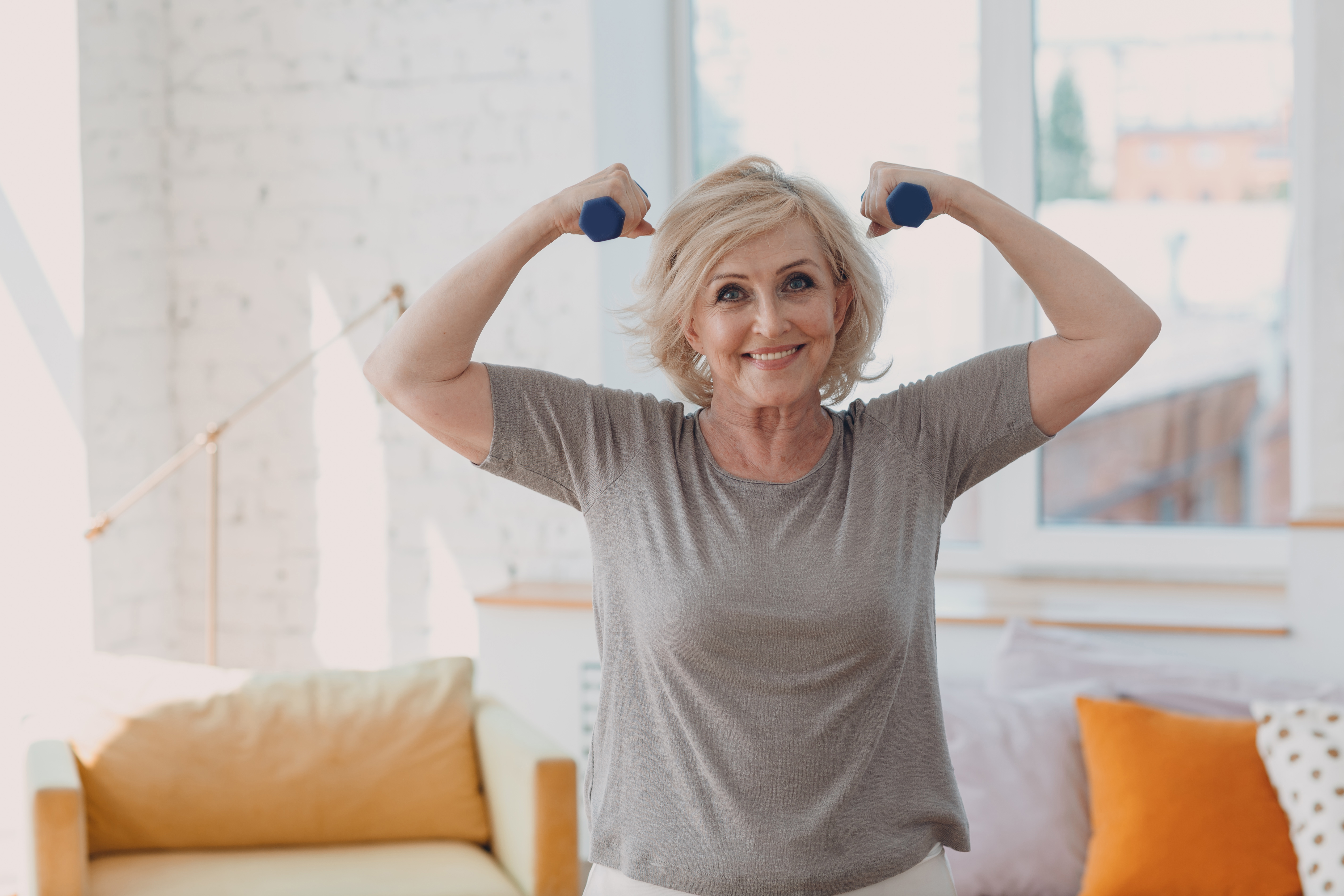
Arm circles can improve range of motion in the shoulders and upper back. Stand or sit with arms extended out to the sides, parallel to the ground. Slowly make small forward circles for 10–15 seconds, then switch to backward circles. Start small, and increase the size of the circles as you warm up. This is a great warm-up to ease stiffness and improve flexibility in the upper body.
16. Toe Taps for Hip and Leg Activation
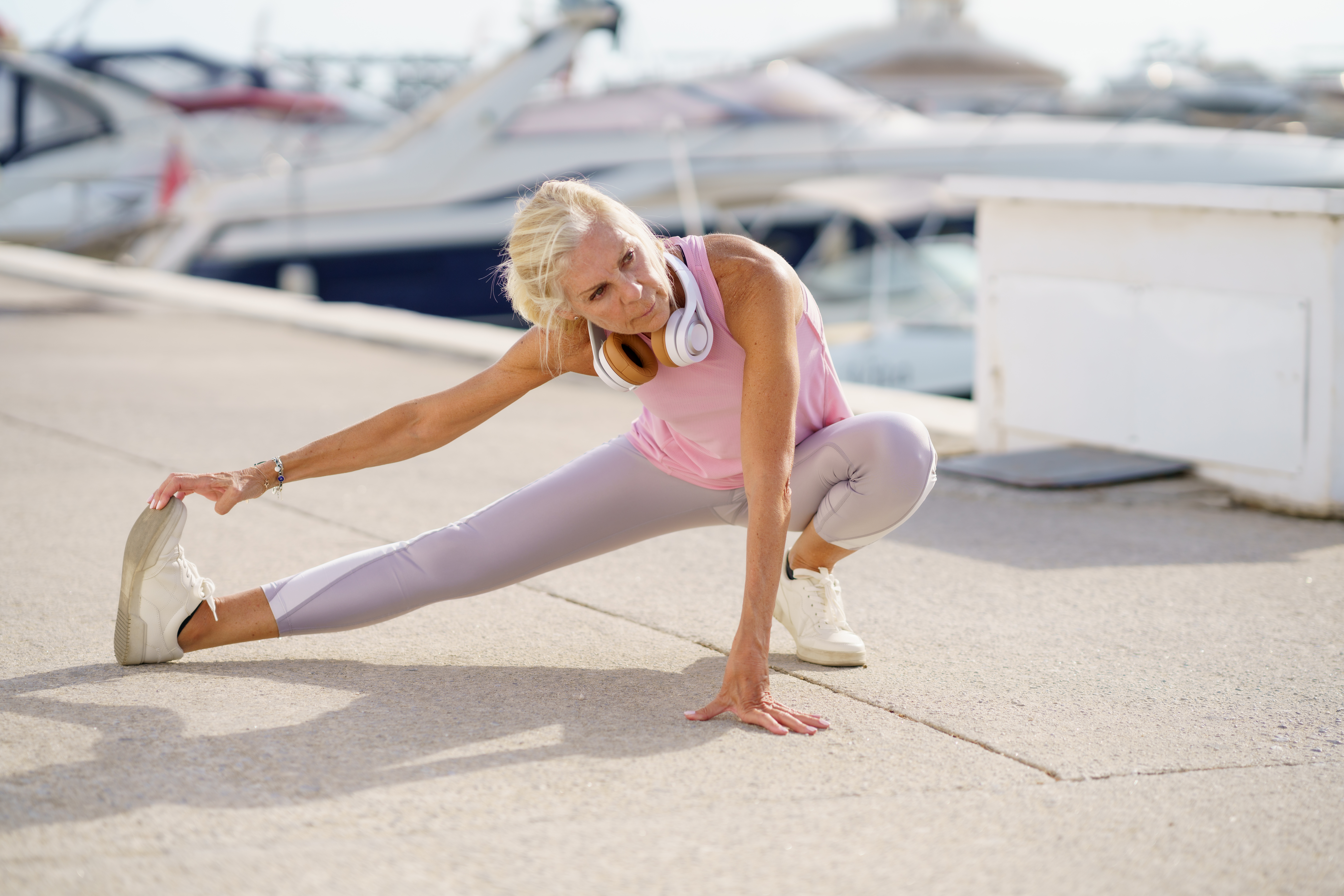
Toe taps strengthen the lower legs and improve control. Sit in a chair with your feet flat. Lift your toes while keeping your heels on the floor, then tap your toes back down. Repeat this 20 times. For a challenge, try alternating feet. This helps activate the muscles around the shins and ankles, which are key for steady walking and climbing stairs.
17. Seated Overhead Press for Upper Body Strength
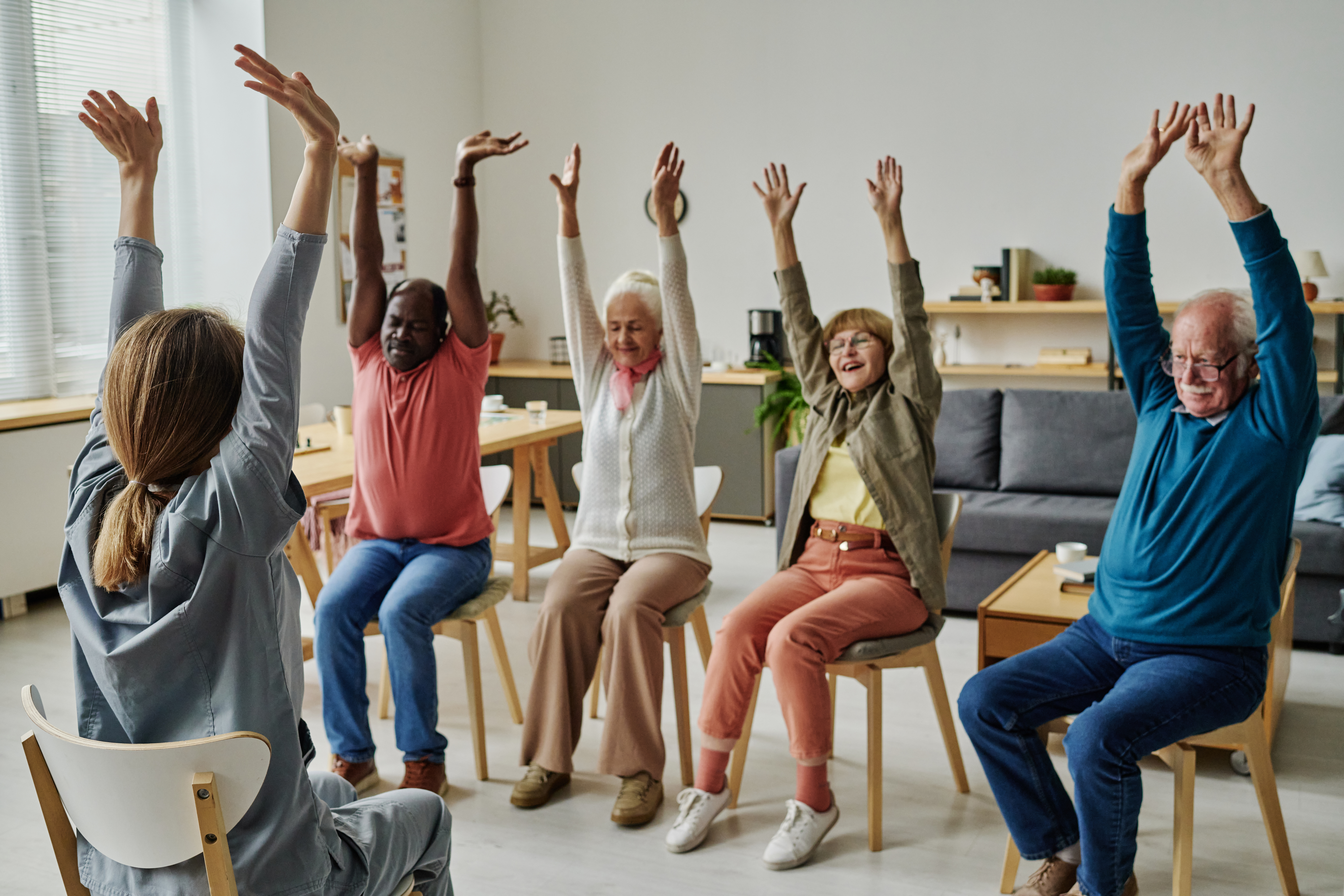
Grab a pair of light dumbbells or even water bottles. Sit up straight with weights at shoulder height, elbows bent. Press the weights overhead until your arms are fully extended, then lower back to start. Do 10–12 repetitions. This movement strengthens shoulders and triceps—muscles you use for daily activities like lifting groceries or reaching overhead.
18. Glute Squeezes to Support the Lower Back
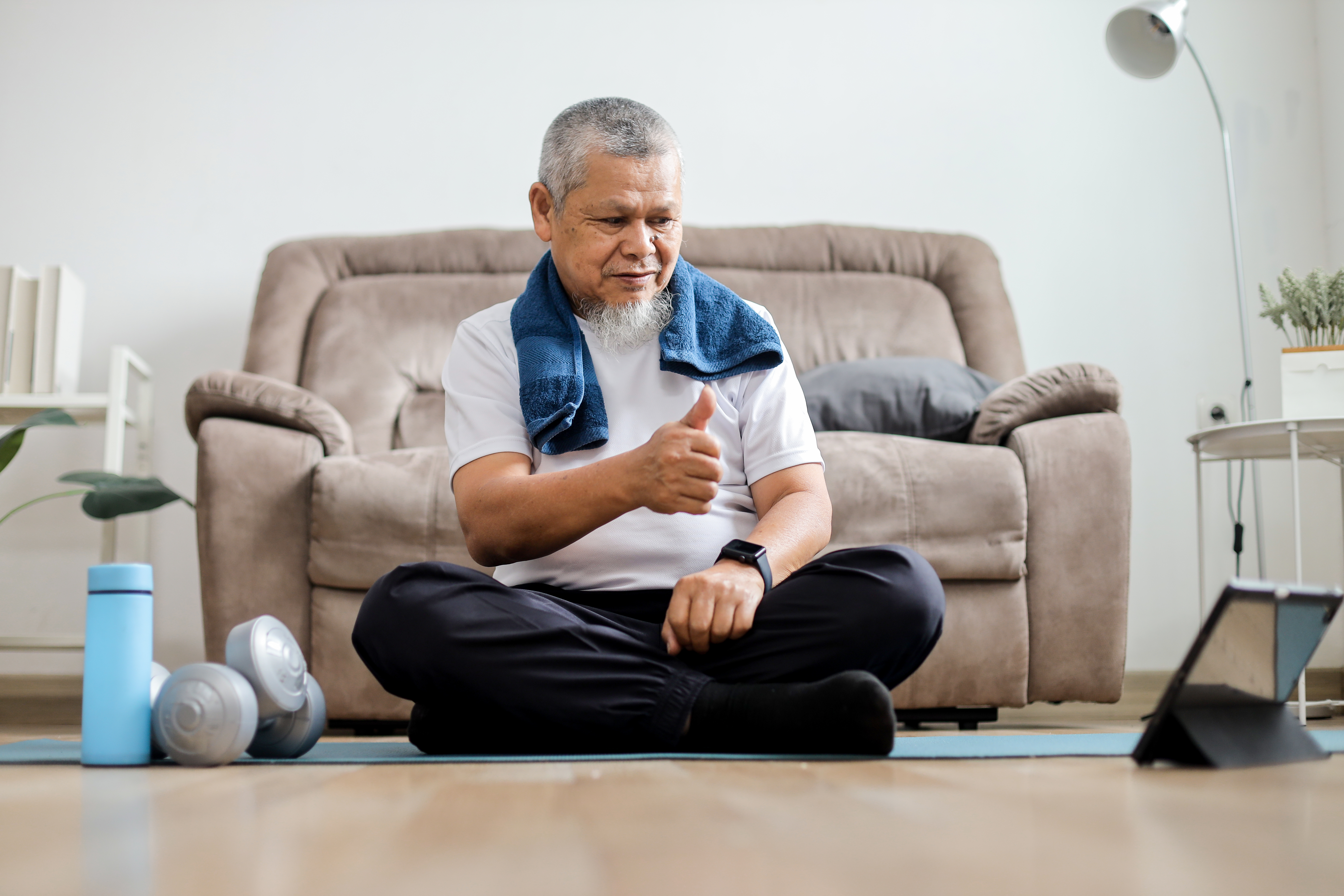
Glute squeezes are an easy way to strengthen your backside and support your spine. Sit or lie down comfortably. Contract your glute muscles (as if you’re pinching a coin between them), hold for five seconds, then release. Repeat 10–15 times. Strong glutes help with posture, balance, and reducing lower back pain.
19. Neck Stretches to Improve Range of Motion
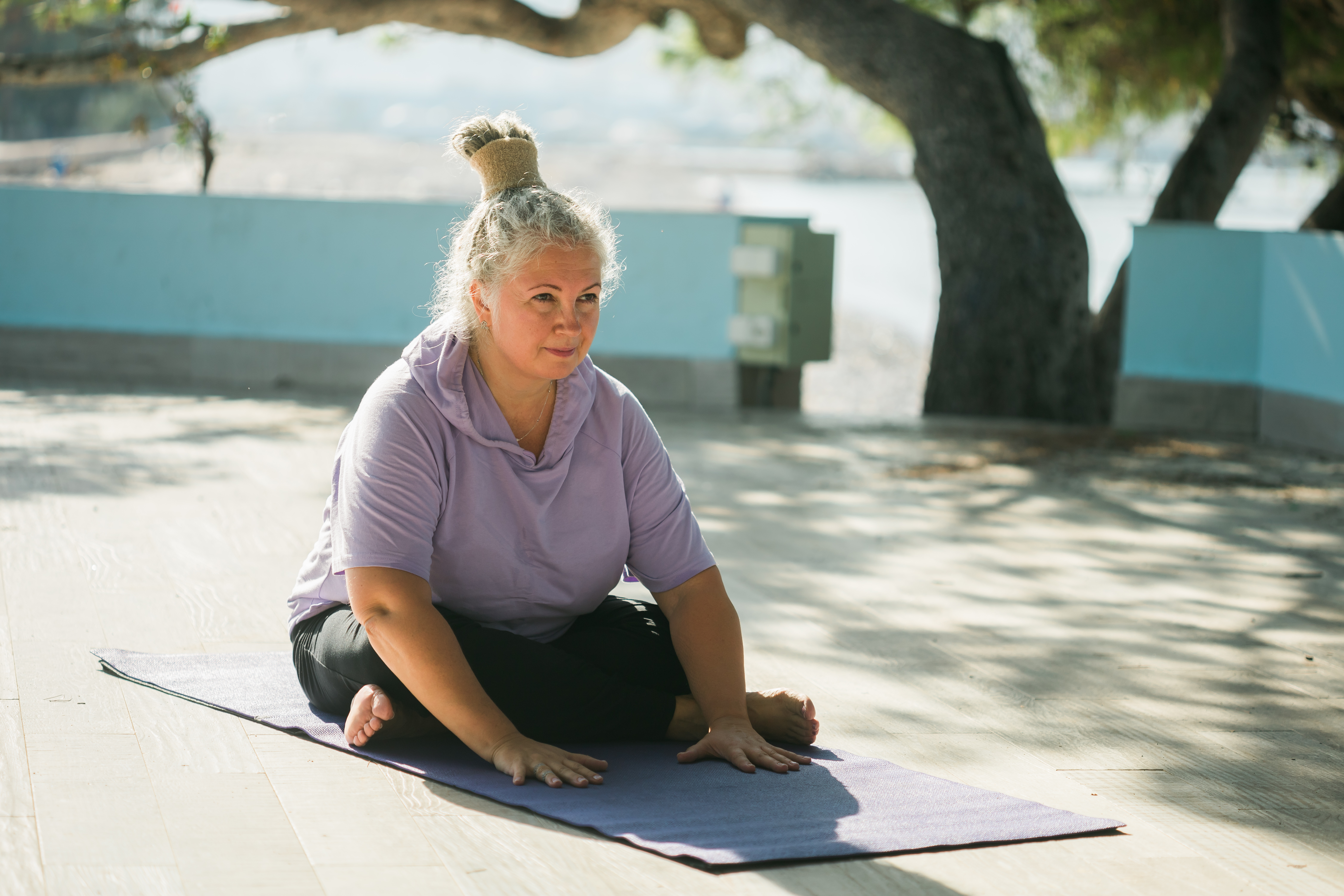
Neck stiffness is common with age. To relieve tension, sit upright and slowly tilt your head to the right, bringing your ear toward your shoulder. Hold for 10 seconds, then switch sides. Next, turn your head to the right, looking over your shoulder, then left. Finally, drop your chin to your chest and hold. Repeat each movement 3–5 times for a full neck mobility routine.
20. Ankle Circles
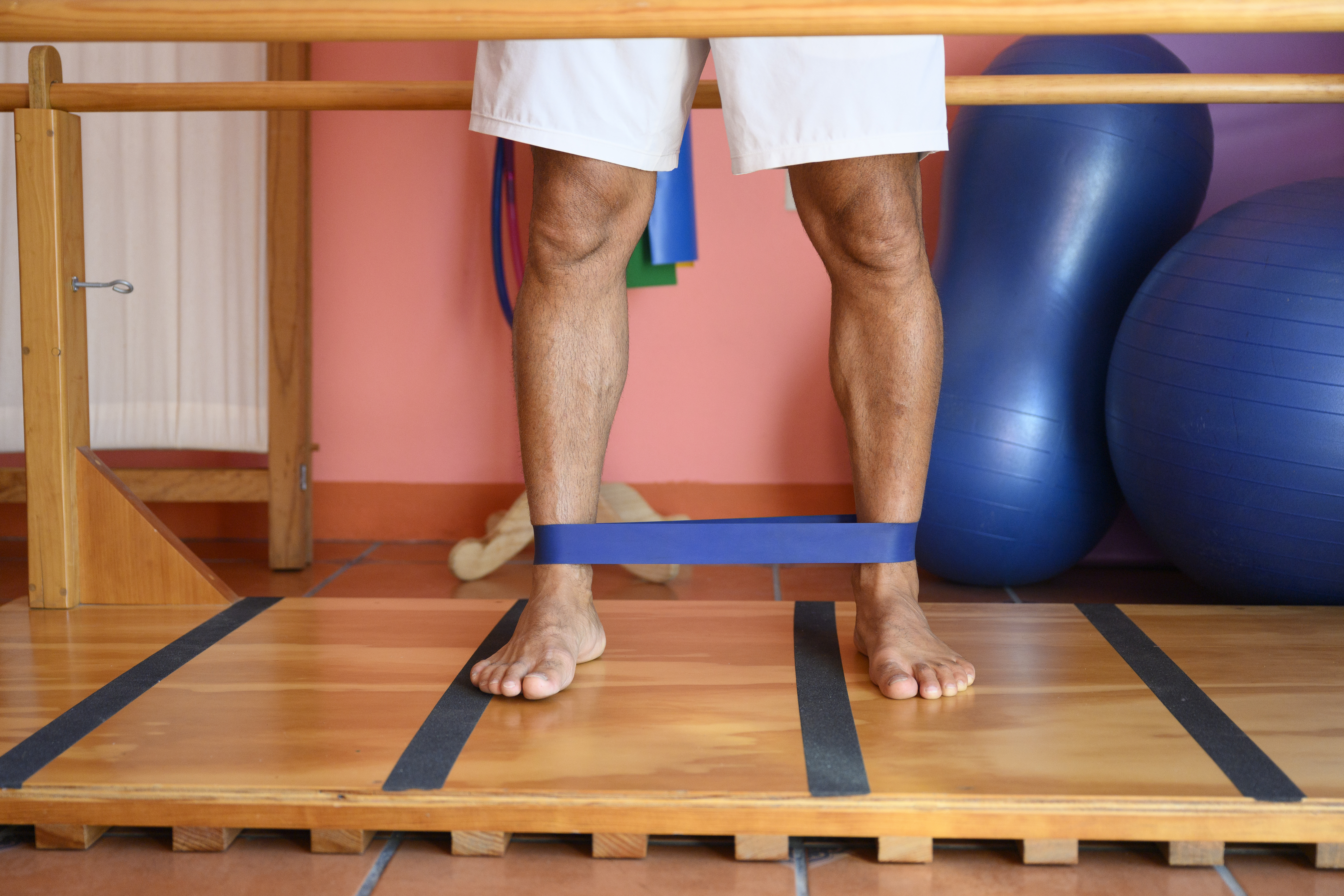
Maintaining ankle mobility is essential for walking and balance. Sit in a chair and lift your right foot off the floor. Slowly rotate your ankle in a circle—10 times clockwise, then 10 times counterclockwise. Repeat with the left foot. This exercise promotes joint flexibility and can help reduce stiffness, especially in colder weather or after long periods of sitting.
Aging doesn’t mean slowing down—it means moving smarter. These workouts aren’t just exercises; they’re invitations to feel stronger, steadier, and more confident in your body every day. Whether it’s a stroll through the park, a set of chair squats, or a few ankle circles during your morning routine, each small movement adds up to big gains in strength, balance, flexibility, and mental clarity. Staying active is one of the most powerful ways to preserve your independence and joy in daily life. And the best part? You can start at your own pace, wherever you are. No matter your fitness level, consistency is key—and it’s never too late to begin. So pick a few exercises that feel right for you, make them part of your routine, and enjoy the incredible benefits of a body that’s moving, thriving, and full of life.
